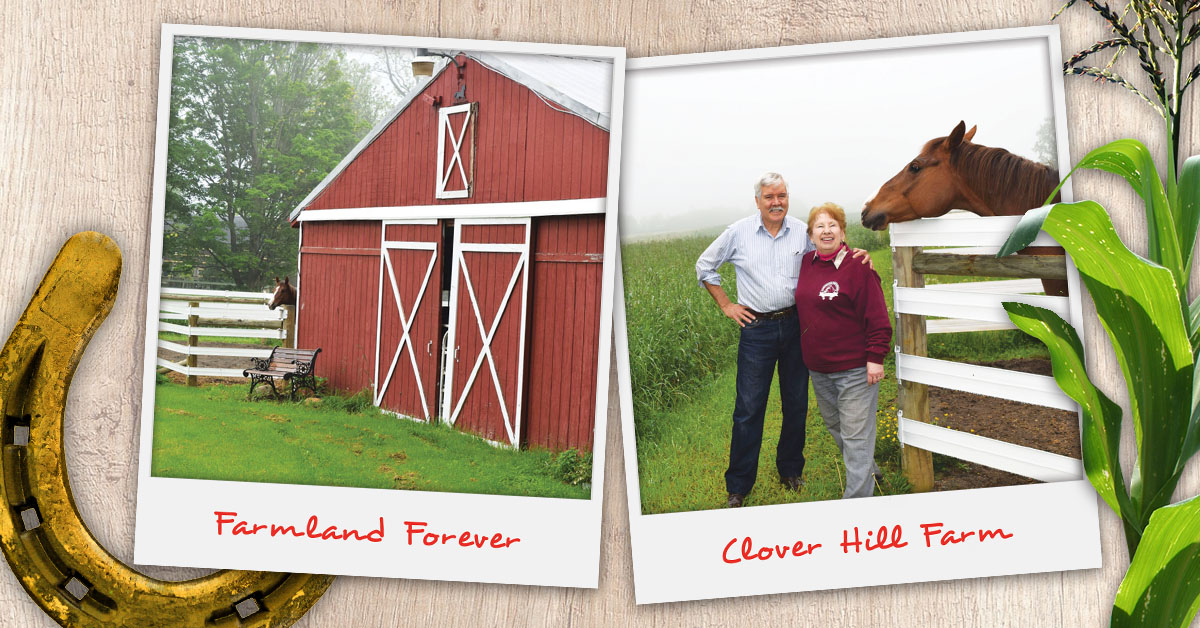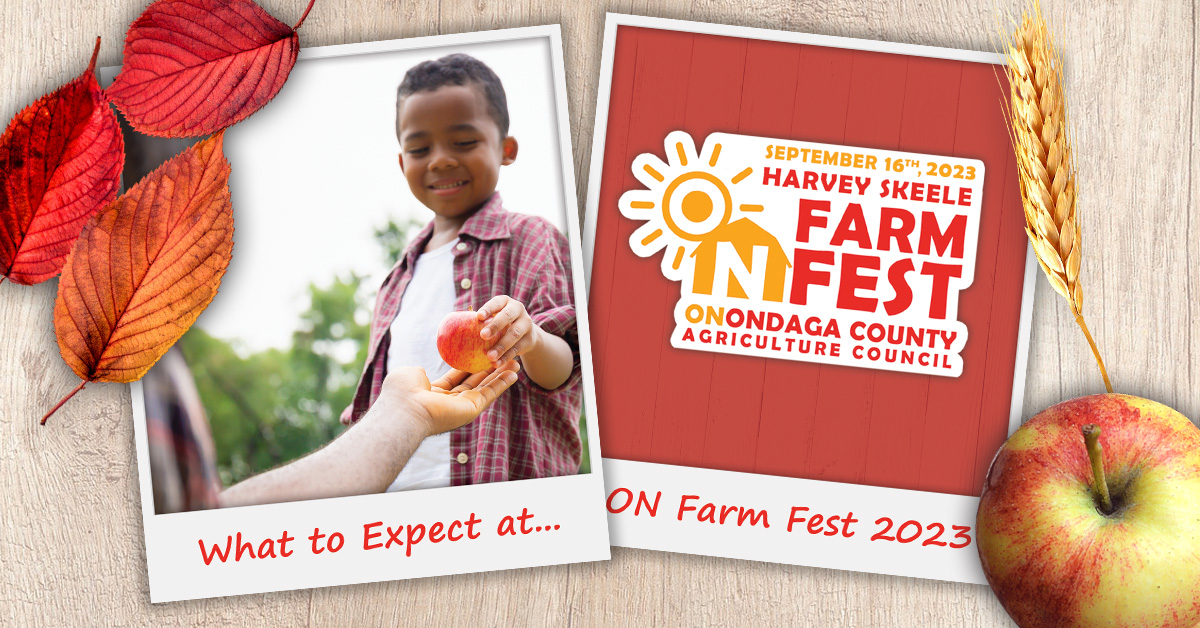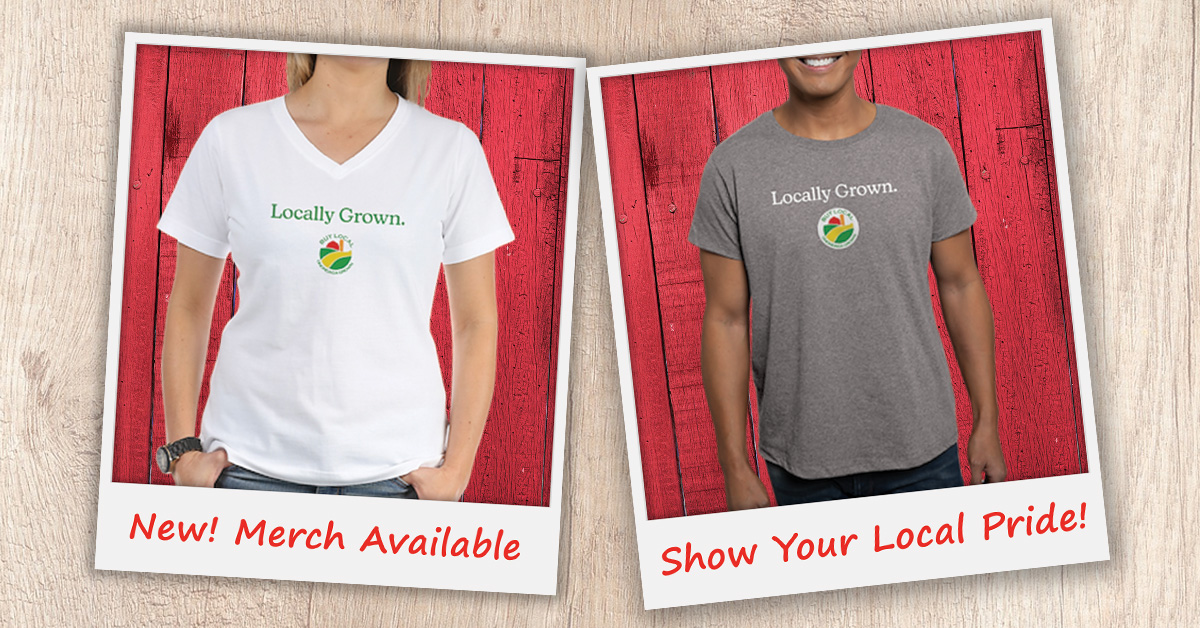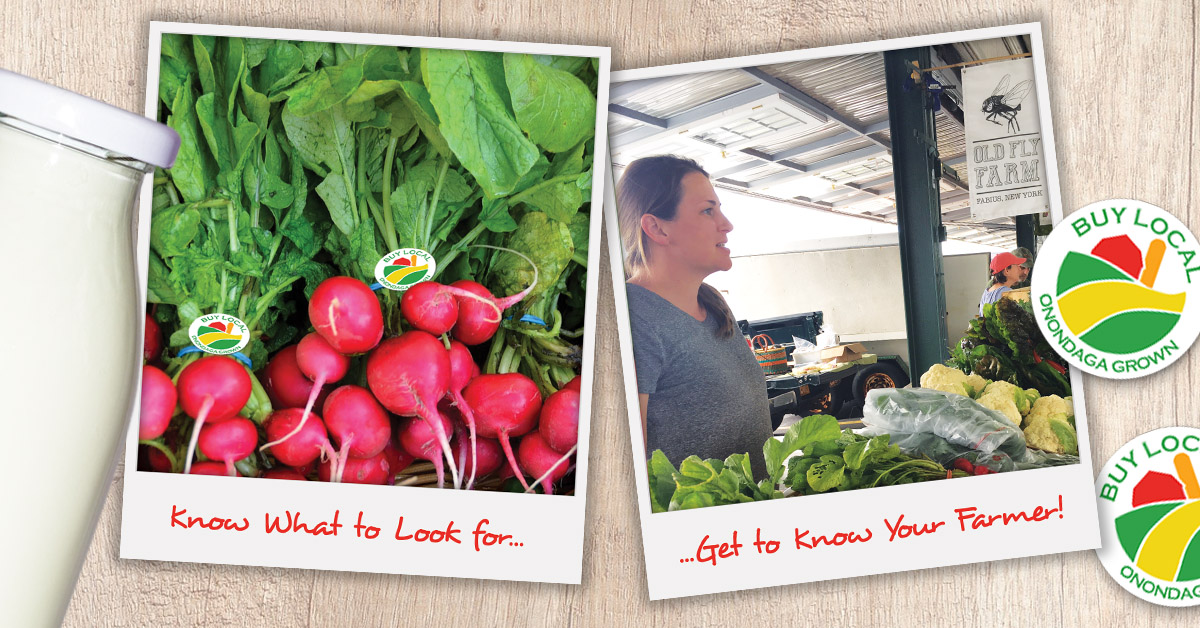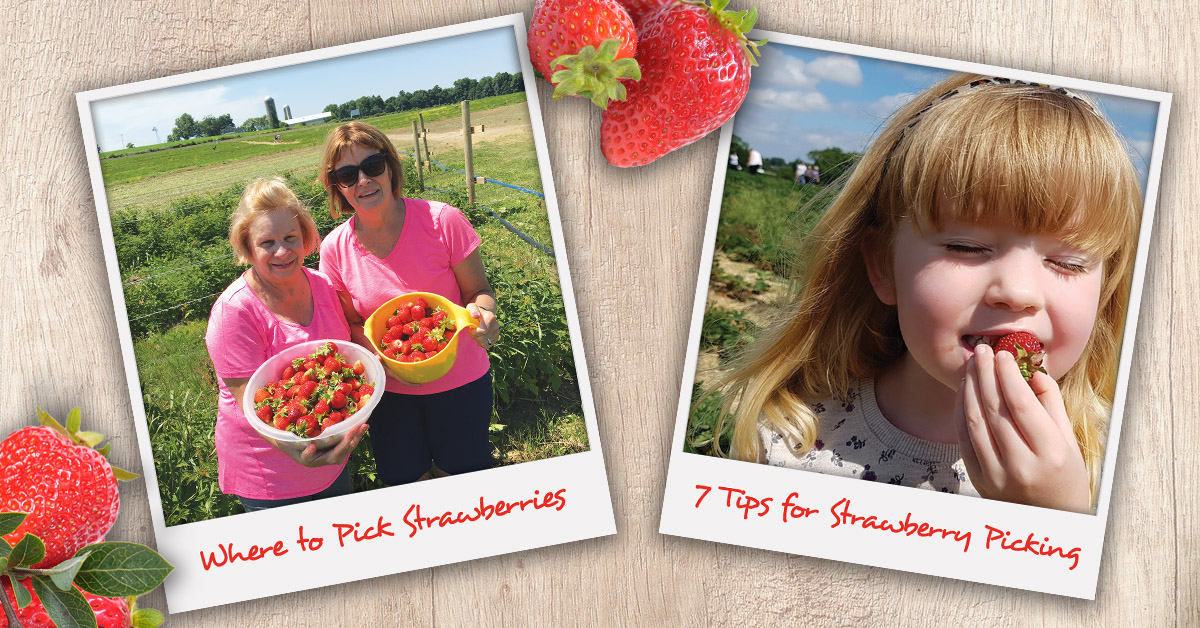The Sunday afternoon drive was once a great American tradition. The purpose was simple: ride into the countryside to enjoy views of rolling fields, grazing cows, and bright red barns.
“I grew up just outside of Liverpool, NY. Every Sunday, my parents drove us along Route 370 to Baldwinsville. It was absolutely breathtaking. Now, much of that scenery is ‘gone but not forgotten’ as the saying goes,” reminisces Sharon Slate.
For Sharon, those Sunday drives were the start of a lifelong appreciation for the beauty – and purpose – of agricultural lands.
Soon, Sharon got involved in horseback riding…which took her deep into the fields she had admired from afar. In 1976, Sharon found someone who shared her love of the country lifestyle, and she married Gary Slate in 1988.
Together, Gary and Sharon purchased 17 acres of farmland in Van Buren, New York. It was the beginning of Clover Hill Farm.
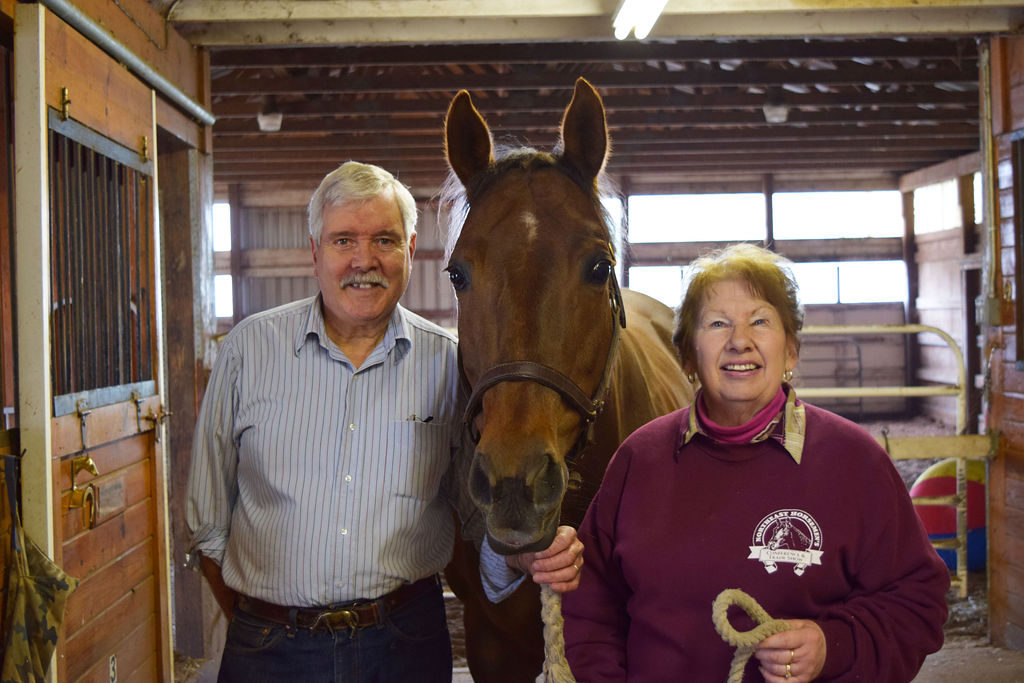
Gary and Sharon Slate stand in the horse barn they built in 1988.
Over the years, the Slates bought up parcels of land surrounding their farm that were planned for commercial lots. While subdivisions and strip malls were popping up nearby, the Slates had “saved” a total of 83 acres of farmland…for now.
Sharon wondered, what would happen to Clover Hill Farm in 20, 50…200 years?
“Open land feeds my soul. Whether it’s riding my horse through a hay field on our property, or just driving through farmland. We made it our mission to protect the land so others could enjoy it…for years to come.”
How Sharon and Gary Slate Made Their Vision a Reality
This summer, Sharon, and her husband Gary, are making good on that promise to preserve farmland in Onondaga County.
On June 16th, 2019, the Slates made an official announcement at a press event held on their Clover Hill Farm in Van Buren, New York.
They had donated a permanent conservation easement on all 83 acres of their farmland to the New York Agricultural Land Trust (NYALT). The easement will legally ensure that the Slates’ land remains undeveloped. However, the Slates still retain full ownership of the land. The only caveat is that if they – or future owners – sell the land, it cannot be developed.
“I felt instant relief when the last document was signed. This is our legacy. We don’t have children or grandchildren, but even if we did, I’d still do the same thing…protect our land from development before passing it to the next generation.”
Why Farmland Preservation Should Be a Priority for Everyone
Every year, New York state loses an average of 5,000 acres of farmland to development – both commercial and residential. That should alarm everyone, not just the agricultural community, as NYALT Executive Director Amy Olney explains:
“A single acre of farmland can produce 1,000 meals per year. Protecting farmland helps keep our local economy strong and ensures food security for our region. We all eat, so I like to say that farmland protection should matter to all of us.”
From tax revenue to employment, the county’s 623 farms make a significant contribution to our local economy: generating over $356 million in economic activity each year. That’s why Onondaga County Executive J. Ryan McMahon, II has prioritized initiatives that protect farmland:
“Protecting and preserving our farmland is important to my administration and exactly the type of thing we should be supporting – because everyone living in our county benefits when our agricultural economy is thriving,” explained County Executive McMahon.
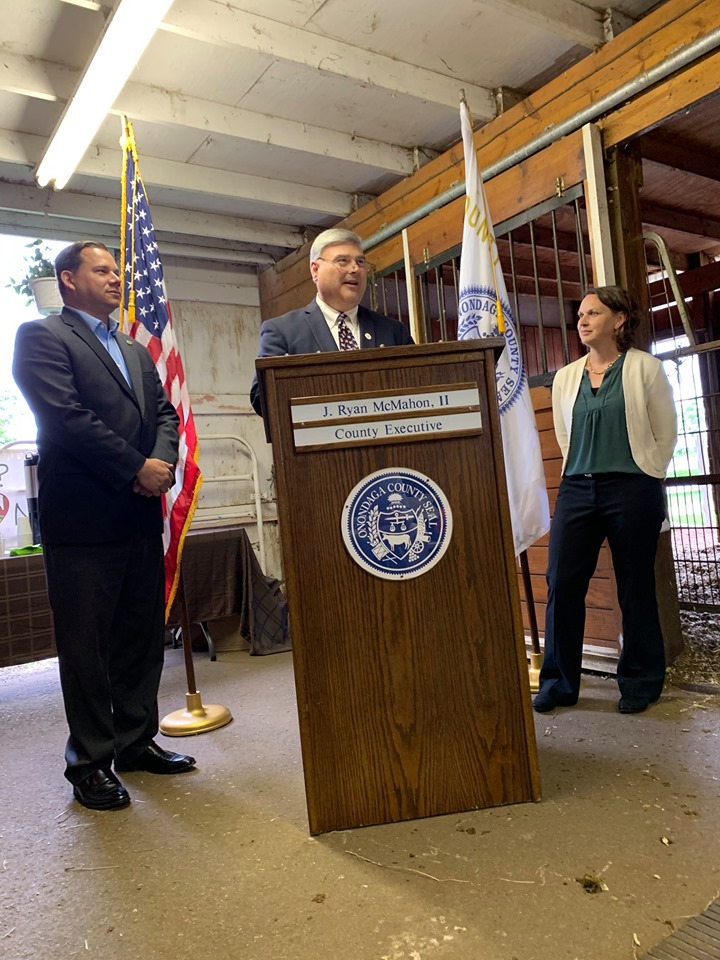
Onondaga County Executive Ryan McMahon, II and Legislature Chairman and Agriculture Council Co-Chair David Knapp honor the Slates.
When unchecked development begins to break up farmland, it has a ripple effect. Here’s just one example: If a few dairy farms close, and the land is sold to make way for a housing development, the remaining farms are at risk. Milk cooperatives and dairy companies may no longer come out to pick up milk each day if there’s only one or two stops to make.
“Our goal is to not only preserve farmland, but to protect farming communities as a whole. This is critical to the health of our economy,” continued Amy.
It Truly Takes a Village to Protect Farmland
There may be many other people who share the Slates’ desire to preserve their farmland. They have two options for obtaining the necessary conservation easement.
First, they can apply to be paid for their development rights by New York State through a “Purchase of Development Rights” or PDR. This is a highly competitive process, and only a few farms are selected.
Farms that are not selected for a PDR can still acquire a conservation easement – but they must donate their development rights, instead of being paid for them. There are, however, substantial transaction costs associated with establishing and maintaining the easement.
That’s when the Onondaga County Agriculture Council, led by Co-Chairs Onondaga County Legislature Chairman David Knapp and dairy farmer Harvey Skeele – stepped up and partnered with NYALT to help defray the costs involved with the Slate project. This new, innovative approach required months of collaboration between the county, NYALT, and the Slates.
“Gary and I were beyond impressed. The whole process made us so very proud to be citizens of Onondaga County. I am actually at a loss for words. It meant the world to us that everyone came together to help us achieve our vision for Clover Hill Farm,” said Sharon.
Sharon urges anyone that owns farmland – of any acreage – to reach out to NYALT to explore their options for protecting it.
“Clover Hill Farm is a special place. It helps me sleep easier knowing that our land will be safe from development. Future generations can enjoy the land that Gary and I love so much. Is there anything better than that?” concluded Sharon.

A field in the heart of the Slates’ 83-acre farm on a misty summer morning.


